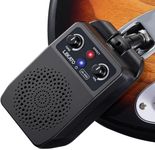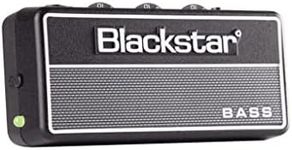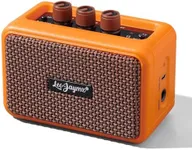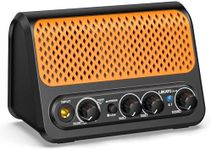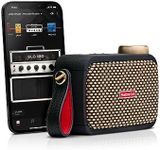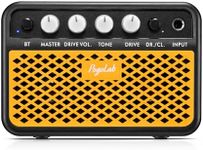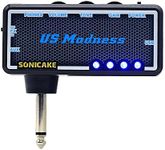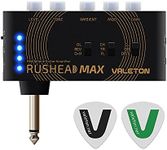Buying Guide for the Best Guitar Headphone Amps
Choosing the right guitar headphone amp can greatly enhance your practice sessions and overall playing experience. A guitar headphone amp allows you to practice quietly without disturbing others while still enjoying the full sound of your electric guitar. When selecting a guitar headphone amp, it's important to consider several key specifications to ensure you get the best fit for your needs. Here are the key specs to look out for and how to navigate them.Sound QualitySound quality is crucial because it determines how accurately and richly the amp reproduces your guitar's sound. Look for amps that offer clear, distortion-free sound. High-quality sound can be found in amps with good frequency response and low total harmonic distortion (THD). If you play different genres, consider an amp with versatile sound profiles to match various styles.
PortabilityPortability refers to how easy it is to carry and use the amp on the go. If you travel frequently or need to practice in different locations, a compact and lightweight amp is ideal. Some models are small enough to fit in your pocket, while others might be slightly larger but still easy to transport. Consider your lifestyle and where you plan to use the amp most often.
Battery LifeBattery life indicates how long the amp can operate on a single charge or set of batteries. Longer battery life means more uninterrupted practice time. If you practice for extended periods or don't want to worry about frequent recharging, look for amps with longer battery life. Some models offer rechargeable batteries, while others use replaceable ones.
Connectivity OptionsConnectivity options determine how you can connect your guitar and other devices to the amp. Common options include standard 1/4-inch input jacks, auxiliary inputs for playing along with music, and Bluetooth connectivity for wireless streaming. Consider what devices you want to connect and choose an amp that supports those connections.
Built-in EffectsBuilt-in effects like reverb, delay, and distortion can enhance your playing experience by adding different sound textures. If you enjoy experimenting with different sounds, look for an amp with a variety of built-in effects. Some amps offer basic effects, while others provide more advanced options. Think about the types of effects you use most often and choose accordingly.
Ease of UseEase of use refers to how user-friendly the amp is. Simple controls and intuitive interfaces make it easier to adjust settings and get the sound you want quickly. If you're a beginner, look for amps with straightforward controls. More experienced players might prefer amps with more advanced features but still appreciate a user-friendly design.
DurabilityDurability is important if you plan to use the amp frequently or take it on the go. A well-built amp can withstand regular use and minor bumps. Look for amps made with sturdy materials and good build quality. If you travel a lot or play in different environments, durability becomes even more crucial.

